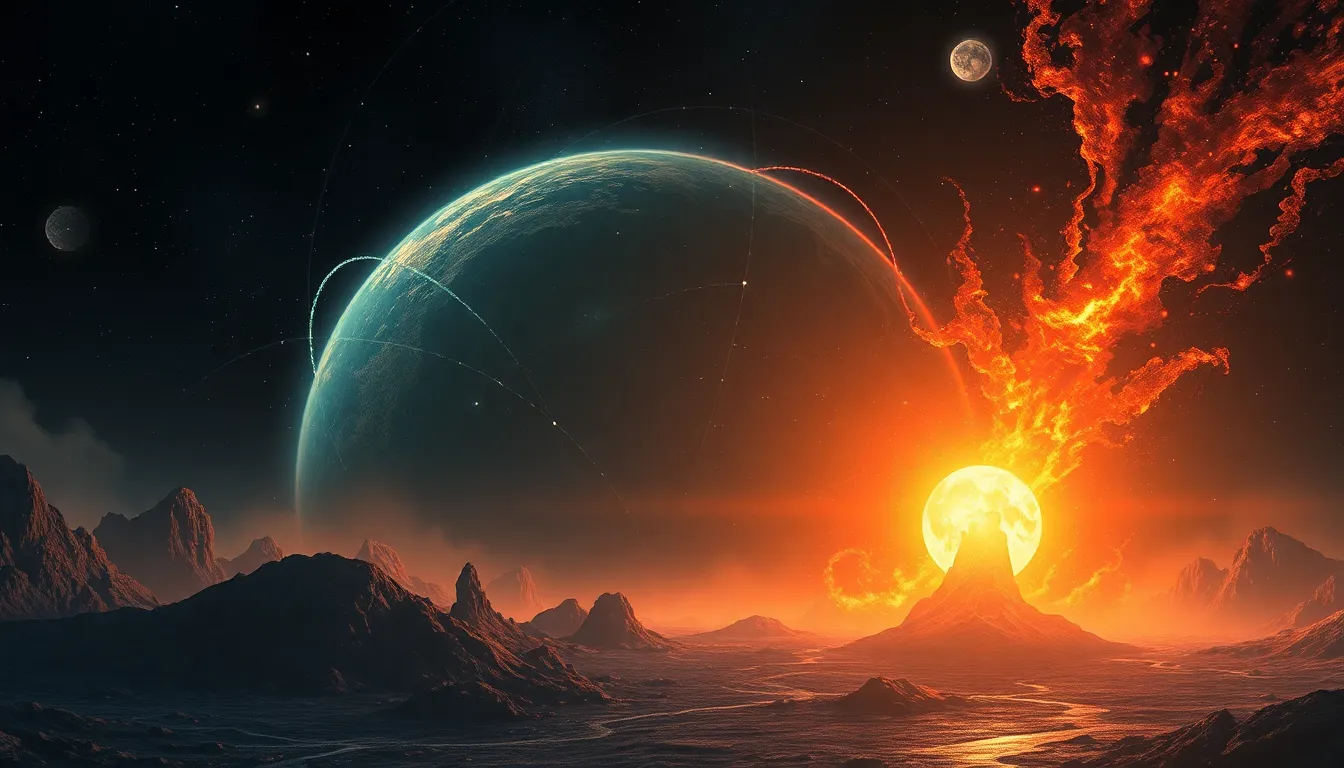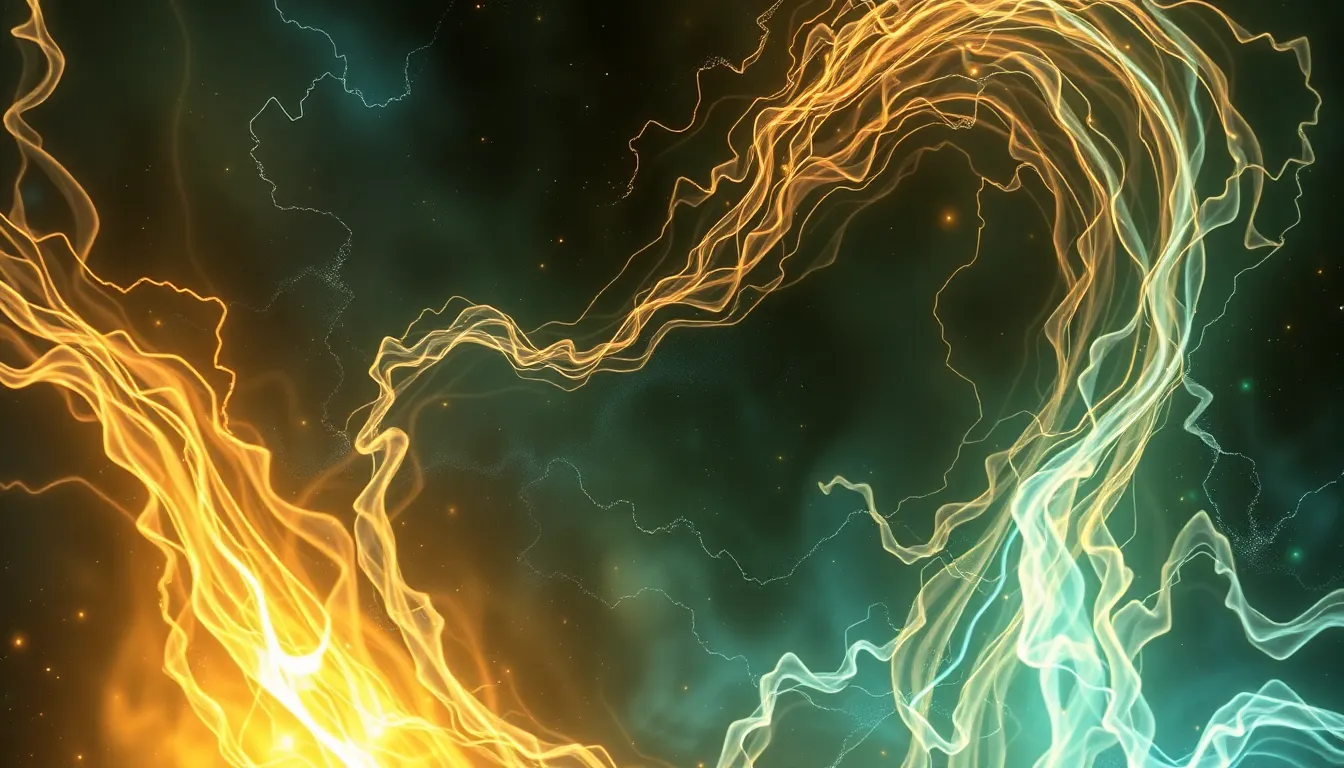The Most Powerful Ancient Deities and Their Legendary Feats
Introduction to Ancient Deities
Ancient deities have played a pivotal role in the development of various cultures throughout history. Representing natural forces, human emotions, and societal ideals, these gods and goddesses often embody the values and beliefs of the civilizations that worshipped them. Mythology serves as a crucial lens through which we can understand human nature and the progression of societies, as it encapsulates the hopes, fears, and aspirations of people across time.
Greek Pantheon: Zeus and His Command Over the Skies
In Greek mythology, Zeus reigns as the king of the gods, wielding immense power over the skies and weather. Often depicted with a thunderbolt in hand, he is the ultimate authority among the Olympian deities.
One of Zeus’s most legendary feats is the Titanomachy, a monumental battle against the Titans, who were his predecessors. This conflict resulted in the overthrow of the Titans and the establishment of the Olympian order. Additionally, Zeus is known for his ability to create storms and lightning, showcasing his dominion over natural phenomena. His legendary status is further solidified through numerous myths that illustrate his power and influence over both gods and mortals.
Norse Mythology: Odin and His Quest for Knowledge
Odin, often referred to as the Allfather in Norse mythology, is revered as the god of wisdom, poetry, and war. He is a complex figure, embodying the dual nature of creation and destruction, often seeking knowledge at great personal cost.
One of Odin’s most famous legendary feats is the sacrifice of his eye at Mimir’s well, which granted him unparalleled wisdom. In addition, he embarked on a perilous quest to discover the runes, the magical symbols that bestow power and knowledge. Odin’s relentless pursuit of wisdom demonstrates his commitment to enlightenment, even at the expense of personal sacrifice.
Egyptian Deities: Ra and the Control of Life and Death
Ra, the sun god, stands at the forefront of Egyptian mythology as a creator deity and the embodiment of life. He is often depicted with a falcon head, carrying the sun disk, symbolizing his dominion over the heavens.
Among his legendary feats is the journey through the underworld each night, where he battles the serpent Apophis to ensure the sun rises again each day. This cycle represents the eternal struggle between life and death, showcasing Ra’s role as a life-giver. His influence on agriculture and the daily lives of the Egyptians further cements his significance in this ancient civilization.
Hindu Pantheon: Shiva and the Dance of Creation and Destruction
Shiva, known as the Destroyer and Transformer in Hindu mythology, embodies the duality of creation and destruction. He is often depicted in deep meditation or performing the Tandava dance, which symbolizes the cosmic cycles of creation and destruction.
One of Shiva’s legendary feats is the Tandava dance itself, which conveys the rhythm of the universe and the balance of existence. Through this dance, Shiva demonstrates his power to both create and annihilate, reflecting the cyclical nature of life. His role within the Trimurti, alongside Brahma and Vishnu, further emphasizes his importance in the Hindu cosmology.
Mesopotamian Gods: Enki and the Gift of Civilization
Enki, the god of water and wisdom in Mesopotamian mythology, is revered for his role in creating humanity and providing the knowledge necessary for civilization. He is often depicted with flowing water and is associated with fertility and agriculture.
Among his legendary feats is the creation of humanity from clay, which reflects the importance of water and earth in sustaining life. Enki also established the foundations of agriculture, teaching mortals the skills needed to cultivate the land and thrive. His benevolent nature and contributions to civilization highlight the significance of deities in the development of human society.
Mesoamerican Deities: Quetzalcoatl and the Birth of Humanity
Quetzalcoatl, the feathered serpent god in Mesoamerican mythology, is a symbol of wisdom, wind, and life. He is often associated with the creation of humanity and the impartation of knowledge.
One of Quetzalcoatl’s legendary feats is the creation of humans from maize, a staple crop that sustained many ancient Mesoamerican civilizations. He is also credited with bringing knowledge, including the arts and sciences, to humanity. This dual role as a creator and teacher underscores the importance of Quetzalcoatl in Mesoamerican culture and spirituality.
Roman Deities: Jupiter and the Foundation of Rome
Jupiter, the Roman counterpart to Zeus, is the god of sky and thunder and serves as the king of the Roman pantheon. His influence extends beyond mythology into the very foundation of Rome itself.
Jupiter’s legendary feats include his essential role in the establishment of the Roman state, where he was often invoked for protection and guidance in battles. His victories in war and influence over the Roman populace solidified his status as a deity essential to the identity and success of Rome.
Celtic Mythology: Dagda and the Balance of Life
In Celtic mythology, Dagda is known as the good god, representing abundance and fertility. He is often seen as a protector of his people and an embodiment of balance in life.
One of Dagda’s legendary feats includes his magical cauldron, which never empties and provides endless nourishment. Additionally, Dagda is associated with the control of seasons, ensuring harmony in nature and the cycles of life. His benevolence and magical abilities highlight the reverence the Celts had for the natural world.
Conclusion: The Enduring Legacy of Ancient Deities
The ancient deities discussed in this article have left an indelible mark on human civilization, shaping cultures, religions, and social norms. Their stories reflect the complexities of human existence, encompassing themes of creation, destruction, wisdom, and sacrifice.
Today, the narratives of these powerful gods continue to resonate, illustrating the timeless nature of mythology and its relevance in contemporary society. As we explore these ancient tales, we gain insight into our own humanity and the universal truths that bind us across cultures and eras.



